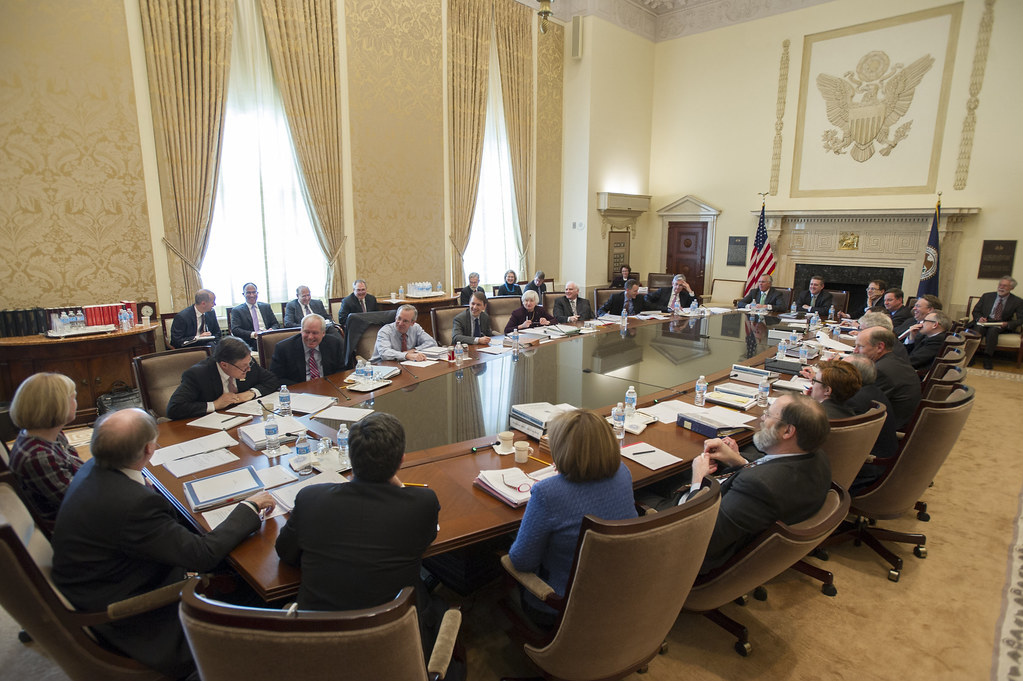Subtotal ₹0.00
Welcome to the latest installment of our “Unlock the Economic Secrets” series. Today, we’re diving into an economic indicator that plays a pivotal role in the trucking industry—interest rates. Whether you’re a carrier, broker, dispatcher, or shipper, understanding how interest rates affect your business can help you navigate the road ahead with confidence.
What Are Interest Rates?
Interest rates are the cost of borrowing money or the return on savings and investments. They are set by central banks, like the Federal Reserve in the United States, which adjusts rates to manage economic growth, inflation, and unemployment. When the economy is heating up, central banks might raise interest rates to cool it down. Conversely, they might lower rates to stimulate growth during slower economic periods.
Interest Rate Movements by the Federal Reserve
Understanding the movement of interest rates over time can give you a clearer picture of economic trends and help you anticipate changes in the market. Below is a chart displaying recent interest rate movements by the Federal Reserve.

Source: Federal Reserve Economic Data (FRED)
Impact of Rising and Lowering Interest Rates
1. Carriers:
- Rising Interest Rates:
- Impact: Higher borrowing costs make financing new trucks and equipment more expensive, potentially slowing down expansion plans.
- Response: Focus on maintaining existing equipment and seek out more efficient routes to save on operating costs. Consider leasing instead of purchasing new trucks.
- Lowering Interest Rates:
- Impact: Cheaper borrowing costs provide an opportunity to expand your fleet or upgrade technology.
- Response: Take advantage of lower rates to finance growth, invest in fuel-efficient vehicles, or refinance existing loans to reduce costs.
2. Brokers:
- Rising Interest Rates:
- Impact: Consumer spending might slow, reducing the demand for goods and, in turn, freight volumes.
- Response: Strengthen relationships with reliable carriers and diversify your client base to maintain a steady flow of freight. Consider offering value-added services to attract more business.
- Lowering Interest Rates:
- Impact: Increased consumer spending can boost demand for goods, leading to higher freight volumes.
- Response: Use this opportunity to negotiate better contracts and secure long-term agreements with shippers, ensuring a steady flow of business.
3. Dispatchers:
- Rising Interest Rates:
- Impact: Fewer loads may be available as overall economic activity slows.
- Response: Optimize routing and scheduling to reduce empty miles and increase efficiency. Explore opportunities to consolidate loads to maximize truck usage.
- Lowering Interest Rates:
- Impact: More loads may become available as economic activity picks up.
- Response: Enhance coordination with carriers to manage the increased volume effectively. Consider using technology to improve scheduling and communication.
4. Shippers:
- Rising Interest Rates:
- Impact: Higher financing costs might limit your ability to hold large inventories.
- Response: Focus on improving supply chain efficiency and reducing excess inventory. Negotiate favorable terms with carriers to maintain cost-effective logistics.
- Lowering Interest Rates:
- Impact: Easier access to financing allows for larger inventories and better preparedness for demand fluctuations.
- Response: Increase inventory levels strategically and lock in favorable transportation contracts during periods of low rates to stabilize your supply chain.
How Often Does the Fed Meet to Decide on Interest Rates?

Understanding how often the Federal Reserve meets to discuss interest rates is crucial for anyone in the trucking industry, as these decisions can have a significant impact on your business.
The Federal Reserve’s Federal Open Market Committee (FOMC) meets eight times a year to evaluate economic conditions and decide whether a change in interest rates is necessary. These meetings are typically spaced about every six weeks throughout the year.
Why Does This Matter?
Interest rate decisions by the Fed can influence borrowing costs, consumer spending, and overall economic activity—all of which directly affect the trucking industry.
- Regular Meetings: The FOMC’s eight scheduled meetings provide a consistent opportunity to assess the health of the economy and adjust monetary policy accordingly. This regularity helps create predictability for businesses.
- Unscheduled Meetings: In addition to the scheduled meetings, the FOMC can also hold unscheduled or emergency meetings if economic conditions change rapidly. These meetings allow the Fed to respond swiftly to unexpected economic shifts, such as a financial crisis or sudden economic downturn.
Conclusion
Interest rates are a crucial factor in the trucking industry, influencing everything from the cost of borrowing to consumer demand. By understanding how interest rates are set, how they impact your business, and when the Fed meets to decide on interest rates, it allows you to anticipate potential changes in the economic landscape and prepare your business accordingly. When you’re planning to finance new equipment, adjust your pricing strategy, or manage inventory levels, staying informed is key to making strategic business decisions.
Stay tuned for more insights in our “Unlock the Economic Secrets” series, where we continue to explore the key indicators that can help you navigate the ever-changing landscape of the trucking industry.
Additional Resources
- Federal Reserve Economic Data (FRED): Stay updated on the latest interest rate movements. Visit FRED
- Federal Reserve Board: Learn more about how the Fed sets interest rates. Explore the Federal Reserve
- Bloomberg Economics: Keep track of global economic indicators, including interest rates. Go to Bloomberg


